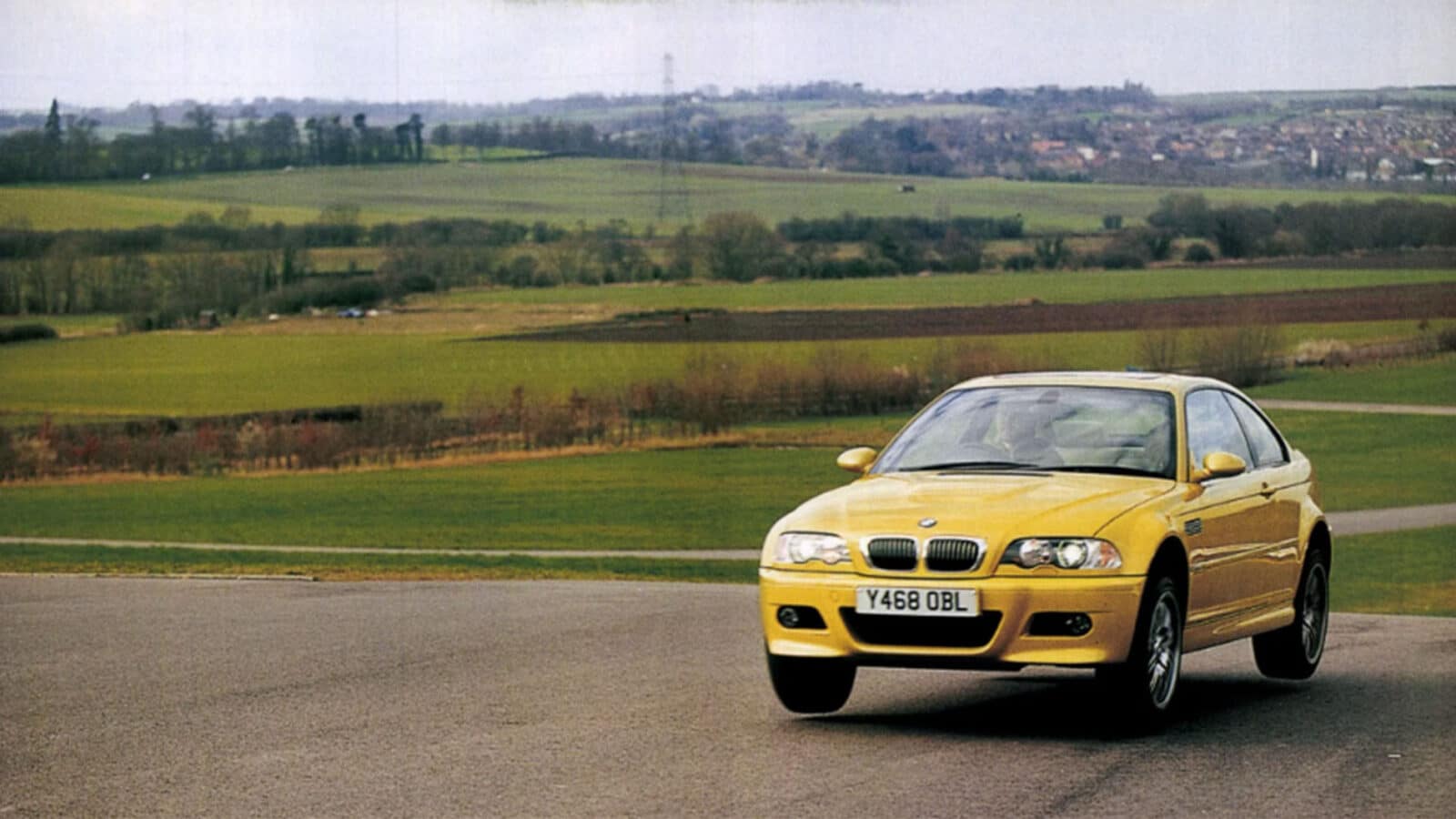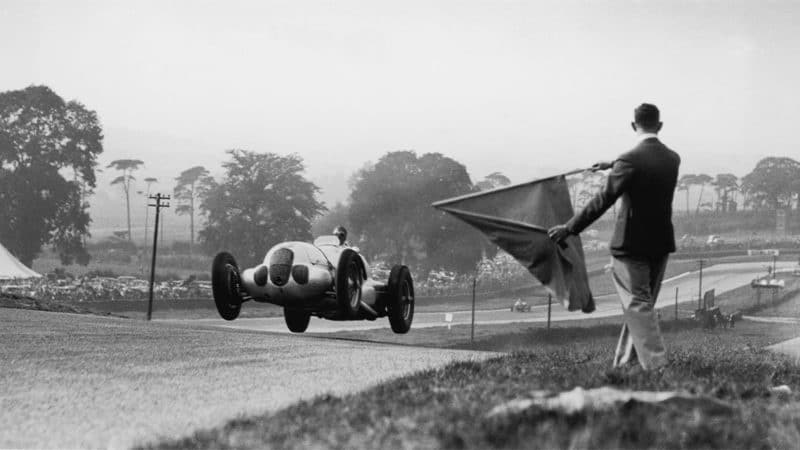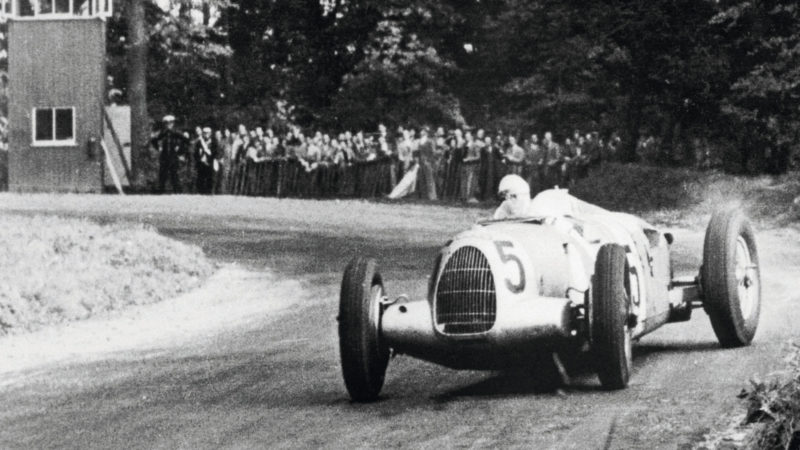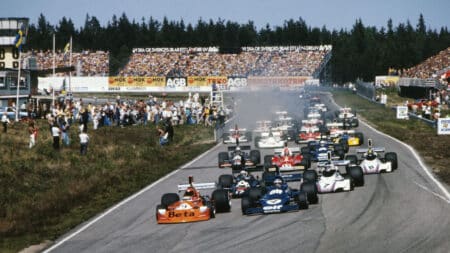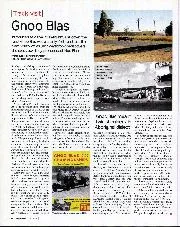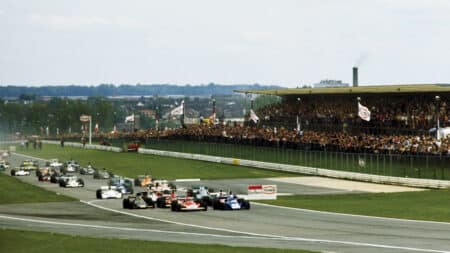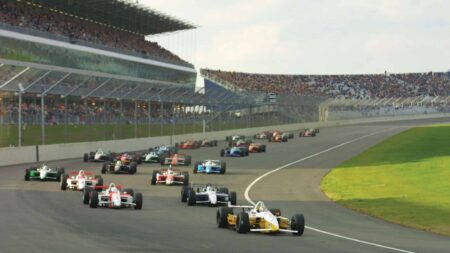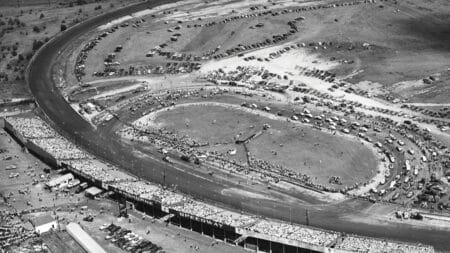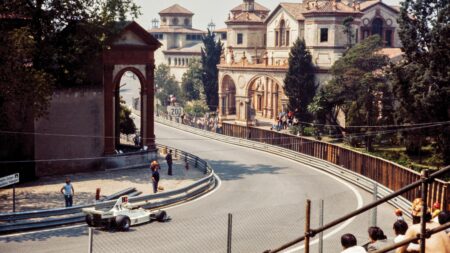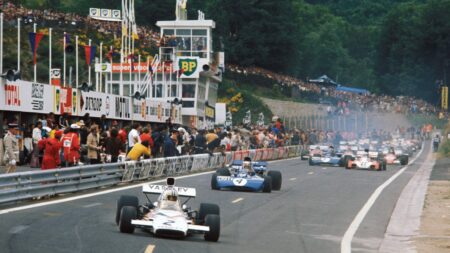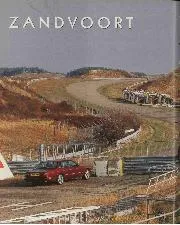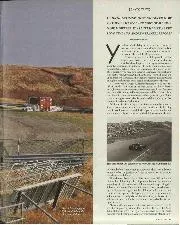Up here was the start-finish line and a full grandstand electrified by the sight of the silver cars leaping into view, but there’s nothing left now. A Donington worker tells us that it’s only a couple of years since they cleared away the timbers of the old timing hut. Now, instead of keeping it flat to cross the line and set up for Redgate’s original lefthander, we have to hit the brakes. There’s a wall in the way. Slap across both arms of the loop is a workshop compound. It means trickling round to the gates to rejoin on the other side of the wall, and this untidy set of buildings doesn’t seem to belong on a GP circuit. Except for one feature. Our friend beckons us. He knows we are looking for history, and he points to a small lump of Tarmac in the yard. ‘That’s the old stuff, the pre-war track.” Not being experts in bitumen archaeology, we gaze solemnly at a black square. And then move on.
That whole western limb of the Melbourne Loop was sidelined in Wheatcroft’s various planning battles. Whereas most of the circuit lies in Leicestershire, the loop penetrates Derbyshire, and having fought one expensive public enquiry for the main circuit, Tom was reluctant to invoke a separate one for the loop. So it remains tantalisingly empty, except for a weekly market.
Redgate Corner has vanished under more recent pockmarked paddock Tarmac, but by extrapolating the lines of the new Melbourne loop, which exactly follows the old track, and the row of buildings to the west of the paddock, it’s easy to locate. Make that left turn and walk alongside those sheds and you are now on the old track heading for Redgate Lodge. In the 1930s you’d be grabbing third, then fourth here, leaving the Lodge on your left as you tore into Holly Wood, then curved right and downhill towards the Hairpin; today wire fencing keeps you well away from the new Redgate corner, a square right instead of an acute left. Stroll around the lodge and you come to the access road which shadows the track down through the scary adverse-camber sweepers now known as the Craner Curves.
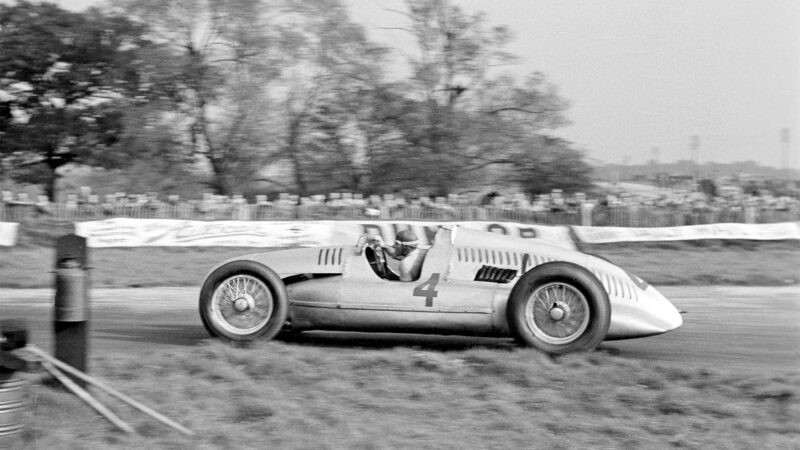
Nuvolari manhandling his Auto Union Type D monster at Donington ’38
Klemantaski Collection/Getty Images
Through this roller-coaster the new track converges on the old, heading for the Hairpin, where the estate road once branched left for Donington Hall. From the spectator banking you can see the 18th-century Gothic frontage of mossy stone, where in WWI German prisoners were held. It’s now the HQ of British Midland Airways. Once the Hall looked over a tranquil, wooded valley with narrow tracks to its estate lodges; today it is completely divorced from the circuit it used to dominate. When the Shields family owned the estate in the ’30s, it was itself a minor tourist draw. Early race programmes call the park “The beauty spot of England. Luncheons are available at the Hall if arranged by telephone (Castle Donington 43). Tunnel on view, whereby prisoners escaped.”
